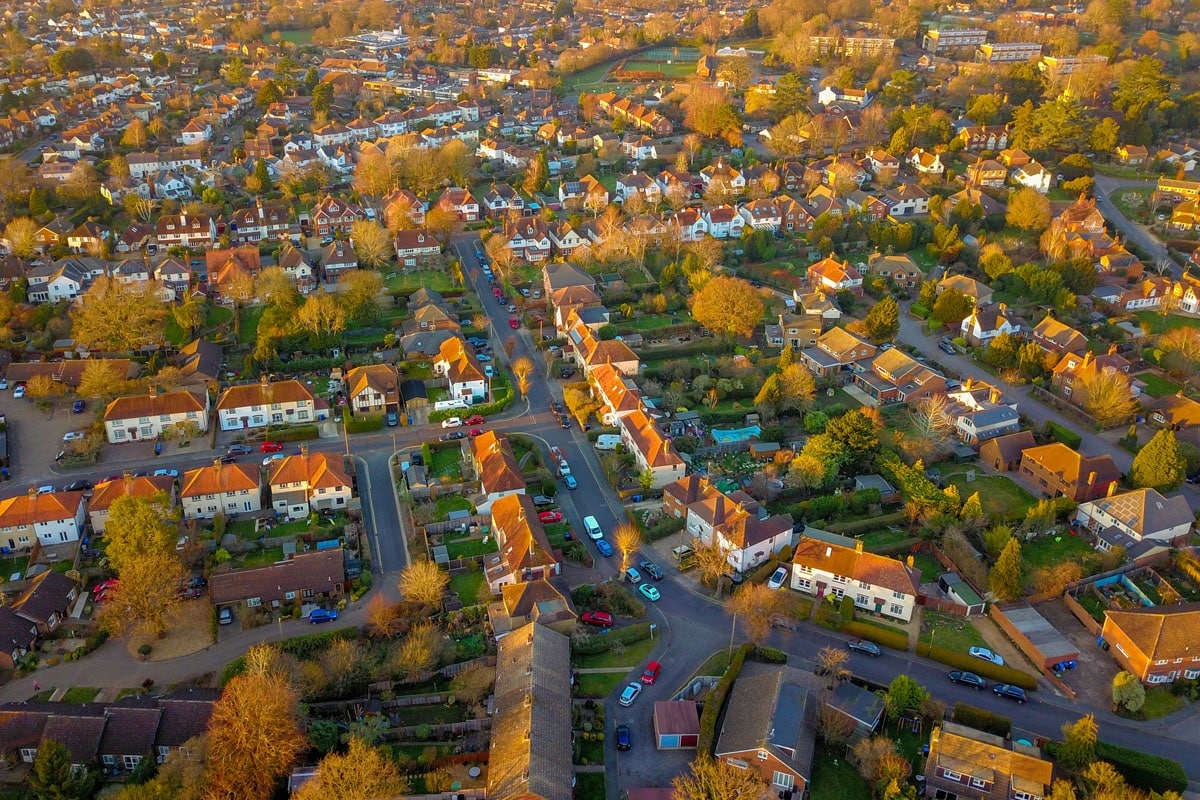Stamp Duty Calculator | (SDLT) Stamp Duty Land Tax for Residential Property

-
by Property Investments UK
The Property Investments UK editorial team have been researching and writing about the UK's property market for more than a decade.
Stamp duty in the UK is definitely something that every buyer and buy-to-let investor needs to consider carefully. The rules and amounts around it are subject to change, it doesn’t apply to everyone, it can add thousands to a property purchase and legislation is different in Scotland and Wales from the rest of the UK.
To help clarify things, we have created an SDLT calculator, free for you to use, and this document explains how Stamp Duty is calculated and when and how it should be paid.
Please note, nothing here should be taken as financial advice and we suggest you talk to a financial consultant before you make any purchases.
Contents
- What is Stamp Duty
- Stamp Duty Calculator
- When Do You Pay Stamp Duty?
- SDLT - Useful Statistics
- HMRC's Stamp Duty Receipts 1997-2022
- When are You Entitled to a Stamp Duty Refund?
- Stamp Duty Rates in England, 2023
- Different Rates Of Stamp Duty
- Stamp Duty in Scotland: Land and Buildings Transaction Tax (LBTT)
- Stamp Duty in Wales: Land Transaction Tax (LTT)
- Changes to Stamp Duty Rates
What Is Stamp Duty?
Stamp Duty is a tax that is charged by the Government when you buy a freehold property. Its correct name is Stamp Duty Land Tax or SDLT for short.
Stamp Duty is also charged when you buy a new or existing leasehold.
It’s an odd name for a tax don’t you think? The term Stamp Duty dates back to the time when it was a small duty charged for stamping documents but, today, Stamp Duty is a tax used to raise Government revenue.
Stamp Duty only applies when buying property in England or Northern Ireland. If you are buying in Scotland a different tax called LBTT applies. If you are buying in Wales a different tax called LTT applies.
The easiest way to find out how much Stamp Duty you might have to pay is to use the Stamp Duty Calculator below.
Stamp Duty Calculator (Stamp Duty Land Tax - England)
Welcome to our Stamp Duty Calculator for England. This tool helps you estimate the stamp duty on a property based on its value and whether it's a single dwelling, a first-time buyer, or a second home/buy-to-let. Please select the property type, enter the property value, and then click "Calculate Stamp Duty" to see an estimated result.
We do not collect or store any data entered into this calculator.
When Do You Pay Stamp Duty?
You may have to pay Stamp Duty whenever you buy a home.
Not every property purchase is liable for Stamp Duty though. If you’re buying a lower-value property or you’re a first-time buyer you might not have to pay Stamp Duty.
Whenever you buy a property you need to fill in a Stamp Duty Return, send it to HM Revenue & Customs (HMRC) and pay any Stamp Duty you owe within 14 days of completion of the property purchase. If you don’t file your Stamp Duty Return on time there may be a penalty.
If you use a solicitor or conveyancer to buy your house they will file the Stamp Duty Return for you. They’ll ask you to pay any Stamp Duty you owe to them, and they will pay it to HMRC.

Stamp Duty Land Tax Useful Statistics (2021-2022)
- In 2021-2022 the Government received £18,465 million from Stamp Duty Land Tax.
- There were 1.2 million house purchases on which Stamp Duty was paid.
- Residential SDLT receipts increased by 69% compared to the previous year.
- 99% of SDLT revenue came from buyers in England.
- London buyers paid more SDLT than any other area. London buyers paid around 36% of all the Stamp Duty paid in England... £5,085 million of it.
- In the fiscal year 2020 to 2021, there were 284,100 transactions eligible for the higher rates on additional dwellings (HRAD). This was a 20% increase, or 46,900 additional transactions, compared to the previous financial year.
HMRC's Stamp Duty Receipts 1997-2022
Source: ONS (Office for National Statistics): HMRC Stamp Duty Receipts UK Total £ Million
When Are You Entitled To A Stamp Duty Refund?
In some cases, you’re entitled to a refund of the Stamp Duty you’ve paid. This may be because you had to pay the higher rate of Stamp Duty since the property you bought was not your main home, but then you sold your main home within three years.
The Stamp Duty refund process is designed so that people who buy a new home before selling their old one are not charged the higher rates of Stamp Duty that investors and second homeowners have to pay.
Stamp Duty Rates In England 2023
Stamp Duty is charged at a different rate for each part of a property’s value that falls within certain bands: Here are the rates of SDLT and bands in 2023:
Single Dwellings
| Property value: | SDLT Rate |
|---|---|
| Up to £250,000 | 0% |
| The next £675,000 (the portion from £250,001 to £925,000) |
5% |
| The next £575,000 (the portion from £925,001 to £1.5 million) |
10% |
| The remaining amount (the portion above £1.5 million) |
12% |
So, for example, if you buy a single dwelling house for £500,000 the SDLT you owe is:
0% on the first £250,000 = £0
5% on the next £250,000 = £12,500
Total SDLT = £12,500
The easiest way to find out how much Stamp Duty you will pay is to use our Stamp Duty Calculator.
First-Time Buyers
First-time buyers are eligible for a Stamp Duty discount (known as a relief) and do not pay any Stamp Duty on a purchase up to £425,000 and then 5% on the portion from £425,001 to £625,000.
If the purchase price is over £625,000 the rates are the same as for people who have bought a home before.
To qualify for first-time buyer relief the house must be your own home. You and anyone you buy with must not have owned a property before.
| Property value: | SDLT Rate |
|---|---|
| Up to £425,000 | 0% |
| £425,001 to £625,000 | 5% |
| £625,001+ | 5%* |
*To clarify because this can cause a little bit of confusion. The 5% paid on the middle band (properties between £425,001 and £625,000) includes £425,000 where no tax is due. However, when a property is in the higher band (625,001 and above), then the first-time buyer will be treated as if they have already bought a home before and will therefore only be entitled to £250,000 tax-free (see rates for single dwellings).
Of course, there are not many first-time buyers that will buy a property that exceeds £625k in value but those that do, are not entitled to any kind of first-time buyer relief.
The calculations would be as follows...
Example 1 - A first-time buyer buys a house for £500,000
0% on the first £425,000
5% on the next £75,000
Total SDLT = £3,750
Example 2 - A first-time buyer buys a house for £700,000
0% on the first £225,000
5% on the next £475,000
Total SDLT = £23,750
Additional Properties and Buy-to-Let
If the property you are buying is what is known as an additional property then you will have to pay a higher rate of Stamp Duty. This is 3% on top of the normal rate for each band in the table above.
Additional properties are any property purchases which mean you will then own more than one. So buyers of second homes, buy-to-let properties and investment properties usually pay more SDLT.
| Property value: | SDLT Rate |
|---|---|
| Up to £225,000 | 3% |
| The next £675,000 (the portion from £250,001 to £925,000) |
8% |
| The next £575,000 (the portion from £925,001 to £1.5 million) |
13% |
| The remaining amount (the portion above £1.5 million) |
15% |
If you still own your home at the point that you buy a new one, you will have to pay the higher rate of SDLT. However, if you sell your old property within 36 months of your purchase you can claim a refund.
If your old home takes longer than 36 months to sell, you may still be able to get a refund but you will have to discuss the issue with HMRC and this will be dependant on your specific circumstances and the reasons it took that long to sell.
Different Rates Of Stamp Duty
There are also some different rules and rates of SDLT in some cases. These include: If you are buying a mixed-use property. If you are a corporate body. Suppose you purchase six or more properties in one transaction. For shared ownership properties. Multiple purchases or transfers between the same buyer and seller are known as linked purchases.
Stamp Duty in Scotland: Land and Buildings Transaction Tax (LBTT)
In Scotland, Stamp Duty is called Land and Buildings Transaction Tax or LBTT. The way LBTT works is set by the Scottish Government and it is administered by Revenue Scotland.
LBTT is charged at the following rates on the amount of the purchase within each band as follows:
| Property Value: | LBTT Rate |
|---|---|
| Up to £145,000 | 0% |
| Over £145,000 (Up to and including £250,000) |
2% |
| Over £250,000 (Up to and including £325,000) |
5% |
| Over £325,000 (Up to and including £750,000) |
10% |
| Over £750,000 |
12% |
LBTT also has an Additional Dwelling Supplement known as ADS if your purchase is a second home or investment property. The rate of ADS is 6%.
Like in England, the amount of stamp duty (or Land and Buildings Transaction Tax) you will pay in Scotland is dependent on the circumstances of the transaction. The above data is only concerned with single dwellings. You can find more information on LBTT and how it is calculated, here.
Stamp Duty in Wales: Land Transaction Tax (LTT)
In Wales, Land Transaction Tax or LTT replaced Stamp Duty in 2018. The way LTT works is set by the Welsh Government and it is administered by the Welsh Revenue Authority.
LTT is charged at the following rates on the amount of the purchase within each band as follows:
| Property Value: | LTT Rate |
|---|---|
| Less than £225k | 0% |
| Over £225,000 (Up to and including £400,000) |
6% |
| Over £400,000 (Up to and including £750,000) |
7.5% |
| Over £750,000 (Up to and including £1,500,000) |
10% |
| Over £1,500,000 | 12% |
As in England, the amount you will need to pay in Stamp Duty or LTT (Land Transaction Tax) on a purchase will be dependent on. the circumstances of the transaction. The data above only concerns single dwellings. You can find more information on LTT rates and how they are calculated, here.
Changes To Stamp Duty Rates
The rates of Stamp Duty have been changed several times over the last few years by the Government and it is possible they will be changed again from time to time.
Changes to Stamp Duty rates, if any, are usually announced by the Chancellor of the Exchequer in The Budget every autumn.
This is useful to know if you are planning on buying a house soon. There is always the possibility that the rate of Stamp Duty could be lowered or raised before your purchase is completed.
For this reason, it is always important to make sure you are using the latest version of a good Stamp Duty Calculator to calculate your Stamp Duty.